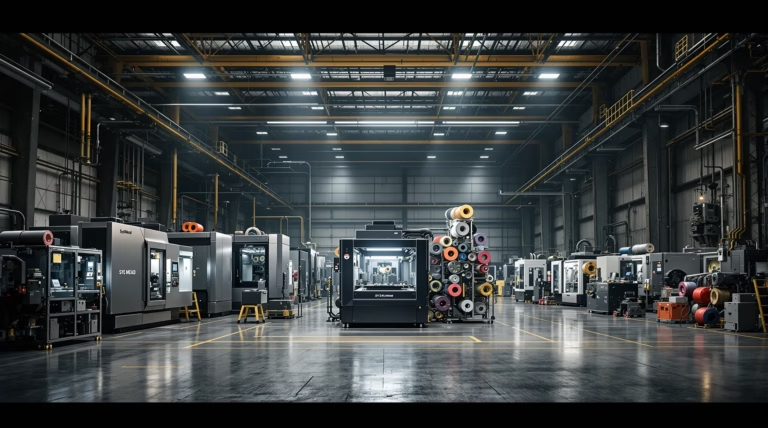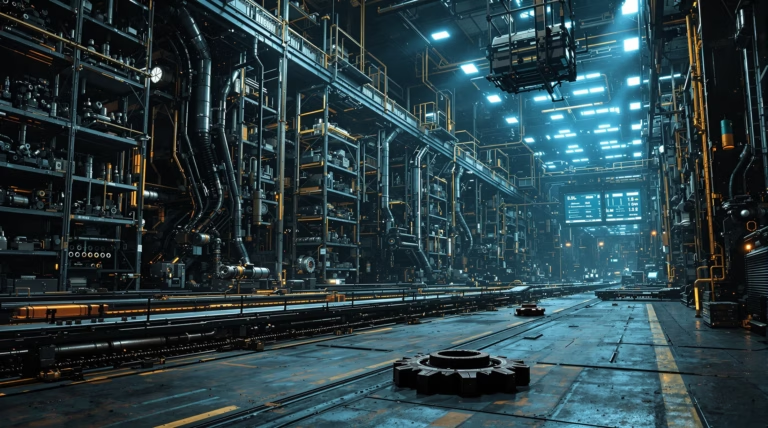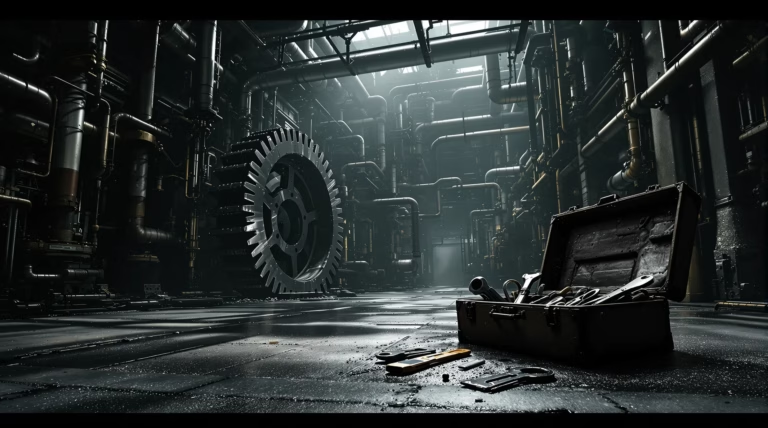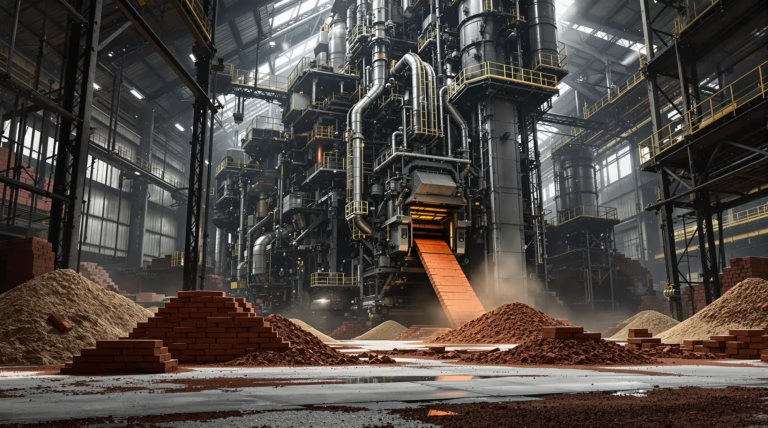Industrial Equipment: Essential Tools for Modern Manufacturing
The rapid evolution of industrial equipment has revolutionized modern manufacturing, enabling unprecedented levels of precision, efficiency, and automation. From basic tools to sophisticated machinery, these technological innovations continue to reshape how products are manufactured, inspected, and delivered to market.
Understanding Industrial Equipment
Industrial equipment forms the backbone of modern manufacturing, encompassing a diverse range of tools and machinery that transform raw materials into finished products. These specialized tools enable manufacturers to achieve precision, consistency, and efficiency in production processes that would be impossible through manual labor alone.
The integration of computerized controls, precision sensors, and automated operations has dramatically enhanced manufacturing capabilities over the past century. These advancements significantly improve throughput while minimizing human error, making industrial equipment essential for maintaining competitive advantage in today’s demanding markets.
Types of Industrial Equipment
- Material Handling Equipment – conveyors, cranes, and forklifts for product movement
- Fluid Handling Systems – pumps and compressors for managing liquids and gases
- Processing Equipment – mixers, grinders, and specialized machinery
- Robotic Systems – programmable mechanical arms for precise, repetitive tasks
- Fabrication Machinery – presses, cutters, and welders
- Assembly Systems – automated lines for product assembly
- Quality Control Tools – inspection and testing equipment
Role in Manufacturing and Production
Industrial equipment directly impacts manufacturing efficiency and productivity by determining production capacity, speed, and quality standards. Advanced manufacturing tools enable companies to produce more units per hour with fewer defects, directly affecting profitability and market competitiveness.
| Manufacturing Aspect | Impact of Industrial Equipment |
|---|---|
| Production Flexibility | Enables rapid changeovers between product variants |
| Quality Control | Maintains consistent standards with precision tolerances |
| Data Collection | Provides insights for process improvement and maintenance |
| Supply Chain | Influences inventory management and production scheduling |
Technological Advancements in Industrial Equipment
Smart manufacturing solutions have transformed traditional production floors into interconnected systems that communicate, analyze, and optimize operations in real-time. Modern industrial equipment features embedded sensors, advanced analytics capabilities, and seamless connectivity, enabling unprecedented levels of automation and efficiency.
Integration of IoT for Real-Time Monitoring
The Industrial Internet of Things (IIoT) has revolutionized equipment management through networked sensors that continuously collect and transmit operational data. These sophisticated monitoring systems provide manufacturers with comprehensive visibility into equipment performance, enabling:
- Real-time monitoring of critical parameters (temperature, vibration, power consumption)
- Remote troubleshooting capabilities
- Automated alert systems for performance deviations
- Predictive maintenance scheduling
- Global equipment status monitoring
- Data-driven decision making
Benefits of Smart Industrial Equipment
Smart industrial equipment delivers quantifiable efficiency gains that directly impact manufacturing operations. Through automated data collection and analysis, these systems identify inefficiencies invisible to human operators. The implementation of smart equipment yields significant improvements across multiple areas:
- Productivity increases of 15-30% through optimized machine utilization
- Energy consumption reduction of 10-20% via automated power management
- Unplanned downtime reduction of 30-50% through predictive maintenance
- Enhanced quality control with real-time defect detection
- Improved setup times and reduced production bottlenecks
Beyond operational improvements, smart industrial equipment enables business model innovation and enhanced customer value. Manufacturers can now offer customized products at near mass-production efficiency through flexible automation systems. The integration of IoT connectivity has revolutionized equipment ownership models, allowing manufacturers to offer equipment-as-a-service solutions where customers pay based on output or uptime rather than purchasing machinery outright. This transformation reduces capital expenditure while ensuring access to the latest technology, positioning smart industrial equipment as a critical determinant of competitive advantage in global markets.
Ensuring Safety and Compliance
Safety and compliance fundamentally shape modern manufacturing operations, directly influencing operational efficiency, workforce morale, and business profitability. Manufacturing environments present diverse hazards requiring comprehensive safety protocols to protect workers while enhancing production quality and consistency.
| Safety Program Benefits | Impact |
|---|---|
| Workplace Incidents | 20-40% reduction |
| Operational Excellence | Higher productivity rates |
| Legal Protection | Enhanced compliance standing |
| Product Quality | Improved consistency |
Regulations Governing Industrial Equipment
The regulatory framework for industrial equipment spans multiple jurisdictions while maintaining common safety objectives. Key regulatory elements include:
- OSHA standards for equipment safeguarding and lockout/tagout procedures
- CE marking requirements under Machinery Directive 2006/42/EC
- ISO 12100 guidelines for machinery safety assessment
- NFPA and ANSI consensus standards
- Ongoing verification and documentation requirements
Training and Proper Handling
Comprehensive worker training represents the cornerstone of accident prevention and equipment protection. Effective training programs integrate theoretical knowledge with practical experience, covering essential operational aspects and safety protocols. Digital innovations, including virtual reality simulations, now enable risk-free practice scenarios, with some manufacturers reporting up to 70% reductions in handling-related incidents post-implementation.
- Startup and shutdown procedures
- Emergency response protocols
- Equipment malfunction recognition
- Maintenance responsibilities
- Standardized communication systems
- Buddy systems for high-risk operations
Maintenance and Longevity of Industrial Equipment
Effective maintenance strategies significantly impact equipment lifespan and performance in modern manufacturing. Well-implemented maintenance programs can extend equipment life by 30-40% while reducing operating costs by up to 15%. This direct relationship between maintenance quality and equipment longevity presents manufacturers with substantial opportunities to maximize their capital investments.
| Maintenance Impact | Cost Comparison |
|---|---|
| Planned Maintenance | Base Cost |
| Unexpected Failures | 3-5x Higher Cost |
| Equipment Lifespan Extension | 30-40% Increase |
| Operating Cost Reduction | Up to 15% |
Importance of Regular Inspections
Systematic inspection protocols form the foundation of effective equipment maintenance. Through regular examinations, technicians can identify early warning signs before catastrophic failures occur. Modern inspection methods incorporate advanced technologies:
- Thermographic imaging for heat pattern analysis
- Vibration analysis to detect mechanical issues
- Ultrasonic testing for internal defects
- Comprehensive mechanical system checks
- Electrical and hydraulic system monitoring
Organizations implementing structured inspection programs report significant improvements, including 25-35% reduction in mean time between failures and 15-20% lower maintenance costs. This data-driven approach transforms routine inspections into strategic tools for optimizing equipment performance.
Best Practices for Maintenance
Leading manufacturers employ multi-tiered maintenance strategies based on equipment criticality. These comprehensive approaches include:
- Preventive maintenance with scheduled service intervals
- Predictive maintenance using real-time performance data
- Autonomous maintenance engaging operators in basic upkeep
- Digital maintenance management systems
- Standardized documentation procedures
- Performance metric tracking and analysis
Companies implementing these best practices achieve Overall Equipment Effectiveness (OEE) improvements of 10-15% within the first year. Success metrics include mean time between failures, maintenance cost percentage, and schedule compliance, demonstrating maintenance’s vital role in manufacturing excellence.
Selecting the Right Industrial Equipment
Equipment selection critically influences manufacturing efficiency, product quality, and operational costs. Organizations using structured evaluation methodologies achieve 20-30% higher ROI compared to price-based decisions. This strategic process requires cross-functional collaboration among production, maintenance, engineering, and financial teams to ensure comprehensive evaluation of equipment impact across the entire manufacturing ecosystem.
Factors to Consider
When evaluating industrial equipment options, manufacturers must assess multiple critical factors beyond basic functionality. Production volume requirements significantly influence equipment selection, as high-volume operations typically benefit from automated solutions with faster cycle times, while lower-volume specialty manufacturing might prioritize flexibility over speed.
- Space constraints and facility integration requirements
- Precision requirements specific to industry standards
- Total cost of ownership throughout equipment lifecycle
- Energy consumption (50-70% of lifetime operational costs)
- Maintenance requirements and downtime frequency
- Compatibility with existing systems
- Vendor support capabilities and resources
- Parts availability and technical assistance
Organizations implementing structured ROI analysis achieve optimal results by quantifying both direct cost factors and indirect benefits such as quality improvements, reduced waste, and enhanced production flexibility.
Case Studies and Examples
| Company Type | Challenge | Solution | Results |
|---|---|---|---|
| Automotive Components Manufacturer | Quality demands and aging equipment | Advanced CNC machining centers with quality monitoring | 42% defect reduction, 28% throughput increase, ROI in 18 months |
| Food Processing Company | Limited budget, capacity expansion needs | Refurbished filling machines with enhanced maintenance | 65% cost reduction, reliability matching new equipment |
These case studies demonstrate how thorough equipment evaluation processes can deliver exceptional returns regardless of budget constraints. Success lies in aligning equipment capabilities with specific operational requirements while maintaining focus on long-term performance and reliability metrics.





